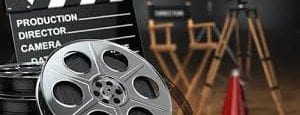FRIDAY JANUARY 10TH-LESSON: ARTS, A/V TECHNOLOGY & COMMUNICATIONS CLUSTER
BELL RINGER
CNN 10 NEWS
MINDFULNESS AND GRATITUDE
DAILY MOTIVATION

CLICK FOR AV COMM CLASS VIDEO
CLICK FOR AV COMM WBACTC VIDEO
CLICK FOR GRAPHIC ARTS WBACTC VIDEO
LESSON: ARTS, A/V TECHNOLOGY & COMMUNICATIONS CLUSTER
CLICK FOR LESSON PLAN
CLICK FOR STUDY GUIDE NOTES
CLICK FOR LESSON VIDEO
CLICK FOR STUDENT LESSON QUIZ
LESSON SUMMARY:
This lesson is meant to introduce and educate students on the Arts, A/V Technology & Communications CTE cluster. Depending on the level of interaction and discussion with class participants, this lesson can last 45-55 minutes.
OBJECTIVE:
Upon completion of these materials, students will know the career pathways and some corresponding occupations within the Arts, A/V Technology & Communications CTE cluster. They will also know the steps to take now to get involved and determine if this career cluster is a good fit for them.
INSTRUCTIONAL VIDEO OUTLINE:
What is Career-tech Education (CTE)?
Definition
Clusters
Pathways
Career-tech Student Organizations (CTSOs) Work-based learning
Arts, A/V Technology & Communications cluster overview Arts, A/V Technology & Communications career pathways
A/V Technology & Film Sample occupations:
Audio Systems Technicians
Video Graphics
Special Effects and Animation Audio-Video Designers and Engineers
Journalism & Broadcasting Sample occupations: Station Managers
Radio and TV Announcers Control Room Technicians Journalists and Reporters
Performing Arts
Sample occupations:
Directors Coaches Actors Composers Video Editors Dancers Screen Writers
Printing Technology Sample occupations:
Graphics and Printing Equipment Operators Lithographers
Web Page Designers
Computer Typography Operators
Telecommunications Sample occupations:
Telecommunication Equipment Cable
Line Repairers / Installers Computer and System Analysts
Visual Arts
Sample occupations:
Fashion Designers
Video Graphics
Special Effects and Animation
Technical Computer Support Technicians
Steps to determine if this cluster is a good fit Look inward
What is my personality?
What are my interests?
What are my living preferences? What are my skills?
Look outward
Research the industry
Speak to professionals in the industry Research details of possible occupations
Get involved
Be a Career Pathway Concentrator Start/join CTSO
A/V Technology & Communications CTSO: SkillsUSA Talk to a work-based learning representative

